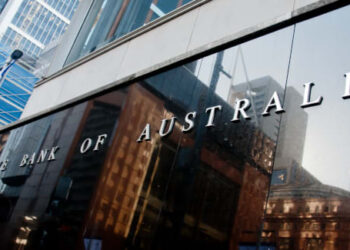The Australian Bureau of Statistics will release its monthly consumer price index (CPI) indicator on Wednesday, just days before the Reserve Bank (RBA) hands down its last rate decision of the year.
Economists at ANZ expect that the indicator will attract considerable attention, with the bank predicting a sharp acceleration in inflation will be depicted over the month of October.
“This will be the first monthly release with the potential to impact market expectations for the next RBA meeting — even though the RBA has played down the importance of monthly CPI data at this stage of its policy deliberations,” the economists said.
The headline CPI indicator is forecast by ANZ to have increased to 7.8 per cent year-on-year in October, up from 7.3 per cent in September, while the trimmed mean CPI indicator is predicted to have risen from 5.4 per cent to 5.9 per cent.
“The reversal of the fuel excise cut and initial inflationary effects of the flooding, which began in mid-October, will put upward pressure on the headline measure in particular,” commented ANZ senior economist Catherine Birch.
“But the broad-based momentum, ongoing strength in domestic demand, continued cost pass-through, and pick-up in wage growth should also see the trimmed mean measure accelerate materially.”
Westpac said that the recently introduced monthly measure of inflation has proven to be a reliable indicator for the quarterly CPI, with both the quarterly and monthly figures showing an increase of 7.3 per cent in the year to September.
While the market forecast has the upcoming monthly CPI indicator rising 7.6 per cent annually, Westpac’s prediction is for a more muted rise of 7.3 per cent.
“We are nearing the peak in the annual pace of inflation, but given the timing of the various surveys, we don’t expect to see it until December. From there, we expect inflation to moderate as we move through 2023 within the usual month-to-month volatility,” the bank said.
AMP chief economist Dr Shane Oliver said that the monthly data will likely show a further lift in inflation to 7.4 per cent annually, but added that the measure misses out on around a third of CPI components, including gas and electricity prices, “so it may understate actual inflation”.
Meanwhile, eToro market analyst Josh Gilbert anticipated that inflation will continue edging closer to the RBA’s predicted peak of 8 per cent by the end of this year.
“Unfortunately for the RBA, last week’s unemployment rate and recent higher-than-expected wage growth haven’t helped the bank’s inflation headache,” he said.
“Although inflation is rising, the pressures are coming from high commodity prices on fuel and construction costs, and rising food prices.”
Mr Gilbert suggested that these may be short-term price shocks that could reverse in the months ahead, particularly as oil prices have already fallen 15 per cent in the past three months.
“Australia currently has lower inflation than the United States and most major EU regions. This makes the RBA’s task of containing high inflation without triggering a recession less challenging when compared to, say, the US,” he said.
“A hotter reading would likely point towards another 25 bps move in December, but a number lower than 7.5 per cent could see another move lower from the RBA.”







